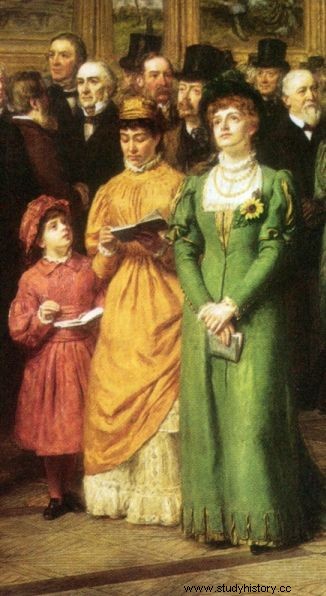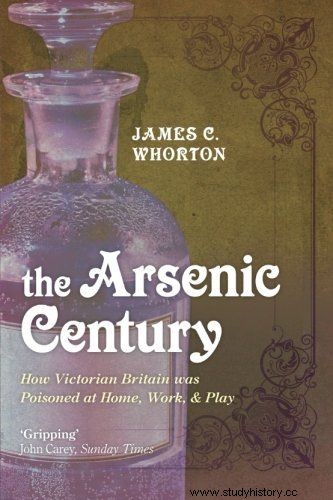Murderous dresses, toys from hell and stockings leading straight to the grave. The greenery in the 19th century was deadly.
Imagine a scene taken out of a Jane Austen novel:a lady at the ball faints in a breathtaking (literally!) Gown, and a handsome bachelor rushes to the rescue. Victorian beauties fainted not only from tightly knotted corsets, but also from arsenic infused dresses.
The dress brings death
The two most popular shades used to dye dresses are called Scheele Green and Paris Green. In one of the reports from 1890 it was found that large doses of these agents were found in approx. 20% of wardrobe goods. And in one sample of green muslin for the ball gown, analysis found over 4 grams of Scheele Green per square meter of fabric. Doesn't sound scary? It should, because Scheele Green is nothing but an arsenic-based poison.

Green can kill. She is no longer alive. Her children will be next…
The toxic dose starts from 10 mg of the substance, about 70 mg are needed to kill a person. If nineteenth-century ladies didn't fall like flies, it was only because Victorian dresses consisted of a good few meters of fabric. Moreover, several layers of underwear and a corset were put under them.
Poison toys

Killer Victorian Fashion. It's easy to guess who of the three will die first…
Stockings were a much bigger problem than poison-soaked dresses. They often contained incomparably more significant doses of arsenic, and because they were worn directly on the skin, they were deadly. In addition, they were decorated with paper flowers - literally drowned in poison.
Killer dyes were widely used not only in the clothing industry. They were also used to paint children's toys , walls (Napoleon, during his exile, ordered his room to be painted green; researchers associate it with his death from cancer), and even Christmas candles. It is not surprising that people got sick and were crying out of this vale of tears.
Killer banquets
At a banquet organized in London by the Irish Army Regiment in the 1850s, the table decorations were sugar leaves stained with Scheele Green. Many guests took them home for their children who died after eating them. At a party in 1860, the chef wanted to make a beautiful green lampoon and sent for a dye. Scheele's Green was brought to him, so for some guests it was unfortunately the last supper.
In 1861, all London newspapers wrote about the death of Matilda Scheurer, a florist who worked with Scheele's Green. The girl died in agony shortly after taking up work. All the nurses in a mental institution and students of the technical college were sick with green curtains and muslin draperies. The latter suffered over a year before the facts were brought together.

The article was based on, inter alia, the book "The Arsenic Century. How Victorian Britain was Poisoned at Home, Work, and Play ”(Oxford 2010).
It took many years for knowledge of the toxicity of arsenic dyes to become widespread. The discovery of the link between green and death quickly influenced world tastes. In the first half of the 20th century, green dresses became extremely unfashionable. Even so, there were still plenty of profit-seeking entrepreneurs. Even after World War II, arsenic paints were available for sale. Perfect for giving a living room a vivid spring color.
Bibliography:
- Bales Kortsch Ch., Dress Culture in Late Victorian Women's Fiction. Literacy, Textiles, and Activism , Ashgate Publishing Limited, 2009.
- Chrisp, P. A History of Fashion and Costume. The Victorian Age , Bailey Publishing Associates Ltd., 2005.
- Emsley J., The Elements of Murder:A History of Poison , Oxford University Press, 2005.
- Paterson M., A Brief History of Life in Victorian Britain , Running Press Book Publishers, 2008.
- Steele P., A History of Fashion and Costume. The Nineteenth Century , Bailey Publishing Associates Ltd., 2005.
- Whorton J. C., The Arsenic Century. How Victorian Britain was Poisoned at Home, Work, and Play , Oxford University Press, 2010.
